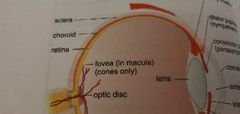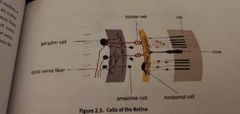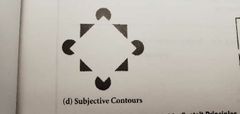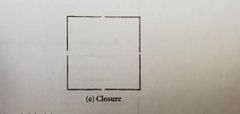![]()
![]()
![]()
Use LEFT and RIGHT arrow keys to navigate between flashcards;
Use UP and DOWN arrow keys to flip the card;
H to show hint;
A reads text to speech;
87 Cards in this Set
- Front
- Back
- 3rd side (hint)
|
Frontal lobe |
Executive function, synthesizing ideas |
|
|
|
Occipital Lobe |
Vision processing |
|
|
|
Parietal Lobe |
Touch, pressure, temperature, pain |
|
|
|
Temporal Lobe |
Sound, speech, memory, language, emotion |
|
|
|
Hippocampus |
Responsible for memory and learning |
|
|
|
Amygdala |
Promotes aggressive and defensive Behavior |
|
|
|
Septal nuclei |
Primary pleasure Center |
|
|
|
Hypothalamus |
Regulates homeostasis and the autonomic nervous system. Also regulates hunger and thirst, and emotion. |
Feeding fighting flighting functioning |
|
|
Hindbrain |
Manages vital functions, arousal, alertness, balance, and motor coordination. |
|
|
|
Midbrain |
Processes sensorimotor reflexes |
|
|
|
Sympathetic nervous system |
Fight or flight response |
|
|
|
Parasympathetic nervous system |
Conserves energy, encourages digestion, slows heartbeat, vasodilation |
|
|
|
Somatic nervous system |
Manages sensory and motor functions |
|
|
|
Autonomic nervous system |
Manages heartbeat, respiration, digestion |
Autonomic is automatic |
|
|
Afferent neurons |
Brings information to the brain and the spinal cord |
Ascend spinal cord |
|
|
Efferent neurons |
Brings information from the brain to the musculoskeletal structures |
Efferent exits |
|
|
Which nucleic acid pairs with guanine |
Cytosine in DNA and RNA |
|
|
|
Which nucleic acid pairs with cytosine |
Guanine in RNA and DNA |
|
|
|
Which nucleic acid pairs with thymine |
Adenine in DNA |
|
|
|
Which nucleic acid pairs with adenine |
Thymine in DNA Uracil in RNA |
|
|
|
Which nucleic acid pairs with uracil |
Adenine in RNA |
|
|
|
Basal ganglia |
Responsible for smooth movements. When damaged, associated with Parkinsons disease. |
|
|
|
Cerebellum |
Regulates motor movements |
|
|
|
Cerebral cortex |
Responsible for complex perceptual, cognitive, and behavioral processes |
|
|
|
Acetylcholine |
In the peripheral nervous system, acetylcholine is used to transmit nerve impulses to the muscles. In the central nervous system, acetylcholine has been linked to attention and arousal. |
|
|
|
Epinephrine and norepinephrine |
Primary neurotransmitter of the sympathetic nervous system. Promotes the fight or flight response. |
|
|
|
Dopamine |
Catecholamine that plays an important role in movement and posture |
|
|
|
Serotonin |
Regulate mood, eating, sleeping, and dreaming. Can play a role in depression and mania if undersupplied and oversupplied respectively |
|
|
|
Gamma-aminobutyric acid |
Producing inhibitory postsynaptic potentials and played a role in stabilizing neural activity in the brain |
|
|
|
Glycine |
Amino acid, but it also serves as a neurotransmitter in the central nervous system. Hyperpolarizes the postsynaptic membrane, similar to the function of gamma-aminobutyric acid. |
|
|
|
Glutamate |
Excitory neurotransmitter in the central nervous system |
|
|
|
Endorphins |
Natural painkillers produced in the brain that have actions similar to Morphine or opioids |
|
|
|
Pituitary gland |
Releases hormones that regulate activities of endocrine glands |
|
|
|
Adrenal medulla |
Release of epinephrine and norepinephrine is part of the sympathetic nervous system |
|
|
|
Adrenal cortex |
Releases corticosteroids including stress hormone cortisol. The adrenal cortex contributes to sexual functioning by releasing testosterone and estrogen |
|
|
|
Pineal gland |
Regulates melatonin, which is related to sleep patterns. |
|
|
|
Dominant (left) hemisphere |
Primarily analytic in function, making it well-suited for managing details like language, logic and math skills. |
|
|
|
Nondominant (right) hemisphere |
Associated with intuition, creativity, music cognition, and spatial processing. |
|
|
|
Sensation |
Conversion of analog signals in the environment into electrochemical signals to the central nervous system. |
|
|
|
Perception |
Processing information to make sense of its significance. |
|
|
|
Absolute threshold |
The minimum intensity that is required to activate sensation |
|
|
|
Threshold of conscious perception |
Minimum intensity of a stimulus to require the central nervous system to perceive that stimulus. |
|
|
|
Difference threshold |
They said the minimum difference in a density between similar stimuli before a person can distinguish the difference between the two. Weber's Law says the difference needs to be at least about 0.68 %. |
|
|
|
Signal detection Theory |
Says that our perception of a stimulus depends on the context of that stimulus. For example, in a crowd, how loud would somebody have to yell your name for you to hear it? |
|
|
|
Adaptation |
Changing perception of a stimulus over time. |
Cold sea water doesn't feel so cold once you get used to it |
|
|
Sclera |

Whites of the eyes |
|
|
|
Retina |

Contains cones and rods for sensing color and black and white |
|
|
|
Iris |
Contains dilator and constrictor pupillae. It is the colored parts of the eyes. |
|
|
|
Aqueous humor |
Bathes the front part of the eye |
|
|
|
Vitreous humor |
Transparent gel that supports the retina |
|
|
|
Cones |
Senses colors |
|
|
|
Rods |
Senses light and dark |
|
|
|
Bipolar cells |

Highlights gradients between adjacent rods or cones |
|
|
|
Ganglion cells |

Synapse with bipolar cells and group together to form the optic nerve |
|
|
|
Optic chiasm |
Images on the left visual field are projected on the right half of the brain and vice versa. |

|
|
|
Parallel processing |
The ability to simultaneously analyze and combined information regarding color, shape, and motion. |
|
|
|
Parvocellular cells |
Specialize in shape detection |
|
|
|
Magnocellular cells |
Specialize in motion detection |
|
|
|
Tympanic membrane |
The eardrum divides the outer ear from the middle ear and vibrates with the same frequency as the incoming sound |
|
|
|
Ossicles |
The three smallest bones in the body in the middle ear. Malleus Incus Stapes |
|
|
|
Malleus |
A hammer that is affixed to the tympanic membrane it acts on the Incus (anvil). |
|
|
|
Incus |
Anvil, which receives the malleus strikes, that acts on the stapes |
|
|
|
Stapes |
Receives the audio signal from the Incus and sends it to the cochlea |
|
|
|
Eustachian tube |
How to equalize pressure between the middle ear and the environment |
|
|
|
Inner ear |
Contains the cochlea, vestibule, and semicircular canals. These form the membranous Labyrinth. |
|
|
|
Organ of corti |
The actual hearing apparatus, which contains thousands of hair cells, that convert physical stimuli into an electrical signal. |
|
|
|
Vestibule |
Contains otoliths that act as LINEAR accelerometers in the ear. |
|
|
|
Semicircular canals |
Contains ampulla that act as ROTATIONAL accelerometers in the ear. |
|
|
|
Papillae |
Bumps on the tongue that host taste buds |
|
|
|
Somatosensation |
Pressure, vibration, pain, and temperature. |
|
|
|
Two point threshold |
Minimum distance necessary between two points of stimulation on the skin so that the points can be felt as two distinct stimuli |
|
|
|
Nociception |
Pain sensation |
|
|
|
Gate theory of pain |
There's a gating mechanism that can turn pain signals on or off affecting whether or not we perceived pain. |
Rubbing an injury like a bump on your knee seems to reduce the pain of the injury. |
|
|
Bottom up processing |
Brain takes the individual sensory stimuli and combines them together to create a cohesive image before determining what the object is. |
|
|
|
Top-down processing |
The brain uses memories and expectations to quickly recognize objects without needing to analyze their specific parts. |
|
|
|
Law of Proximity |
Gestalt principal that says that elements close to one another tend to be perceived as a unit. |

|
|
|
Law of good continuation |
Gestalt pricinple that says that the elements that appear to follow the same pathway tend to be grouped together. |

|
|
|
Subjective contours |
Gestalt principle that says that we perceive contours, and therefore shapes that are not actually present in the stimulus. |

|
|
|
Law of closure |
Gestalt principle that does that went to space is enclosed by a contour it tends to be perceived as a complete figure. |

|
|
|
Law of pragnanz |
Perceptual organization will always be as regular, simple, and symmetric is possible. |
|
|
|
Habituation |
Repeated exposure to the same stimulus can cause a decrease in response |
|
|
|
Dishabituation |
Recovery of a response to a stimulus after habituation has occurred. |
|
|
|
Associative learning |
Creation of a paring, or association, between two stimuli or between a behavior and a response. Classical and operant conditioning |
|
|
|
Classical conditioning |
Ivan Pavlov. Creates associations between two unrelated stimuli. Process of taking advantage of a reflexive, unconditioned stimulus to turn a neutral stimulus into a conditioned stimulus. |
|
|
|
Extinction (stimulus-response) |
Habituation occurs such that the conditioned stimulus no longer produces the conditioned response. |
|
|
|
Generalization |
Similar stimulus can also produce the conditioned response |
|
|
|
Discrimination |
The opposite of generalization. An organism learns to distinguish between two similar stimuli. |
|

